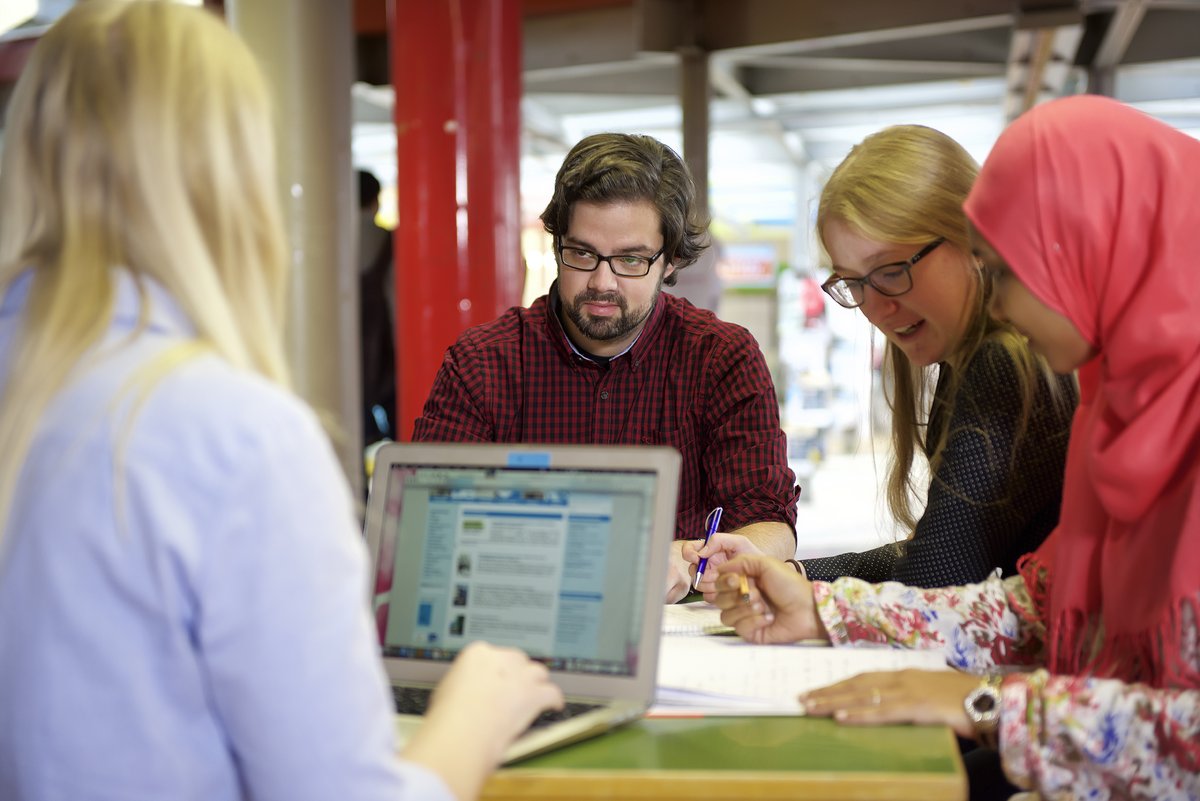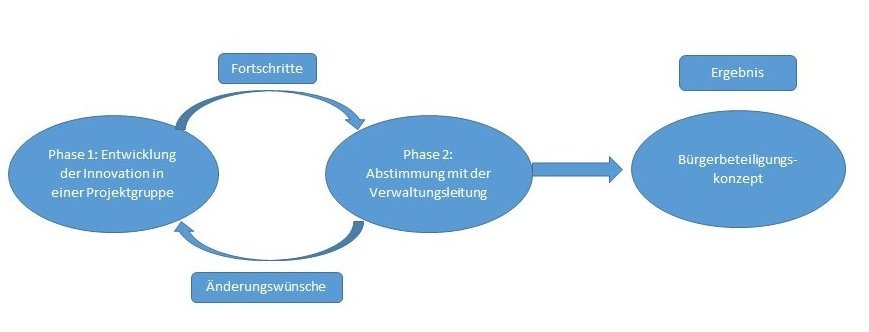
Developing Innovations together with citizens
Results of a Case Study - Nathalie Haug
Abstract
The development of innovations in public administrations poses many challenges, especially when actors outside of the administration, such as representatives of civil society groups or users of administrative services, are involved in the innovation process. This article describes the collaborative development process of an innovation by using the results of a case study. Relevant factors were identified that are important for decision-makers in order to successfully develop an innovation. Important are (1) the continuous communication of (interim) results to superiors, (2) motivated individuals who promote the innovation within the organization and (3) the creation of a constructive discussion by involving an external moderator.
Theoretical Explanations for Innovation Processes in the Public Administration
The aim of the innovation process was to develop a new process for citizen participation, which should integrate participation procedures in the day-to-day business of the administration. The innovation is called Guidelines for Civic Participation. For this purpose, a project group was set up with members from the administration, the local council and the citizens. The group met a total of nine times over a period of one and a half years.
Two approaches were used to explain the innovation process. The first approach comes from Sorensen and Torfing (2011), who developed a theoretical basis for innovation development with several actors. They define several phases, such as the idea development phase and processes that take place during the innovation process, such as the adequate participation of all actors. This theoretical basis is important to explain the different phases of the innovation process itself, as well as dynamics within the project group. The second explanatory approach was the framework of Voorberg, Bekkers and Tummers (2015), which describes how public administration can favor processes with several actors. They highlight several factors, such as administrative support, an open-minded attitude to citizen participation, and motivated individuals who want to shape new administrative processes. With this theory, a basis is created to explain the processes within the administration that influence the development of innovation.
Figure 1 shows the innovation process of the case study. The figure shows two phases. The first phase shows the development of the Guidelines in the group, followed by the modification of the prototype of innovation by the administration in phase 2, which resulted in a draft created by the administration. In the following factors are identified that should be kept in mind when developing an innovation collaboratively.

Maintain communication between citizens and administration
During the development phase of the innovation, the project group worked separately from decision-makers of the administration. Although the aim of the project group was to regularly communicate the results of the project group to the administration, communication did not take place for several reasons. Instead, decision-makers within the administration were informed too late about the project group's work, resulting in two developments. Firstly, a project group meeting was held where management raised fundamental doubts which had a demotivating effect on the project group. Secondly, due to lack of communicating preliminary results and progress of the project group to decision makers, there were far-reaching changes in content of the innovation after the project group finished its work. In sum, it can be said that there was a divergence between the work of the project group and the ideas of the administrative management, which could have been avoided if controversial points had been better communicated and resolved during the development of the innovation.
Mediator who facilitates compromises by uniting different opinions
In the present case, the mediator had a dual mediation role. Firstly, he mediated between the different opinions of the administrative staff and secondly, he mediated between emerging disagreements between the administration and the project group.
In the second phase of the process, the innovation draft of the project group was revised by the administration in an internal coordination process. The mediator played an important role in this process, as he incorporated the suggestions for changes made by the administrative staff. The proposals of the administrative staff were different, some were negative about citizen participation and submitted far-reaching proposals for changes, while others had a positive attitude towards citizen participation and proposed minor changes.
In mediating between the administration and the project group, the mediator's role was to convince the project group members of the changes in the administration through informal discussions. As a result, the changes in the administrative draft, were subsequently accepted by the project group. The mediator's commitment was a decisive factor for the adoption of the innovation.
Creating a constructive discussion
In order to create an objective discussion climate, the group’s composition and the involvement of an external, neutral moderator can be helpful.
The group’s composition made it possible to avoid fundamental debates during the preparation of the first drafts. The main participants in the project group were people with a positive attitude towards civic participation, as it consisted of representatives of civic groups, members of local councils and administrative staff. Thus the discussion was not marked by fundamental debates, but took place on an objective, constructive level, and focused on details such as the implementation of participation procedures in administrative processes.
In addition, the discussion process was accompanied by an external moderator, who supported the objective discussion and accompanied the development of the content of the innovation. For example, a citizen participation concept of another city served as a basis for discussion, which was then adapted to the needs and wishes of the project group. This shortened the idea-finding phase and promoted an objective, constructive discussion.
Recommendations for Innovation Development
Continuous communication between decision-makers in the administration and the project group, the development of compromises by a moderator and the maintenance of an objective discussion climate have proven to be important for innovation development. Thus, we can derive the following recommendations.
1. Ensure that a continuous and meaningful communication between decision-makers and innovation developers is maintained.
This ensures that decision-makers within the organization agree with the content of the innovation. Furthermore, decision-makers can take care of disputed issues and find adequate compromises.
2. Find a highly motivated individual that facilitates compromises.
In this case this was the role of the mediator who had the task to moderate in situations where disagreements threaten to jeopardize the outcome of the project, introduce suggestions for changes and help the participants to find a compromise.
3. Make sure that the innovation developers have common goals.
If the group’s composition is homogenous it is likely that conflicts over fundamental issues arise only on a small scale. If the group is more heterogeneous, it is helpful to have an external facilitator who ensures factual and constructive discussions and a pleasant discussion climate.
Unterlagen

Nathalie Haug holds a Bachelor's degree in Political and Public Administration and is studying at the University of Konstanz in the Master's programme of the same name. Her research includes innovation development in the public sector, digital transformation and citizen participation.
